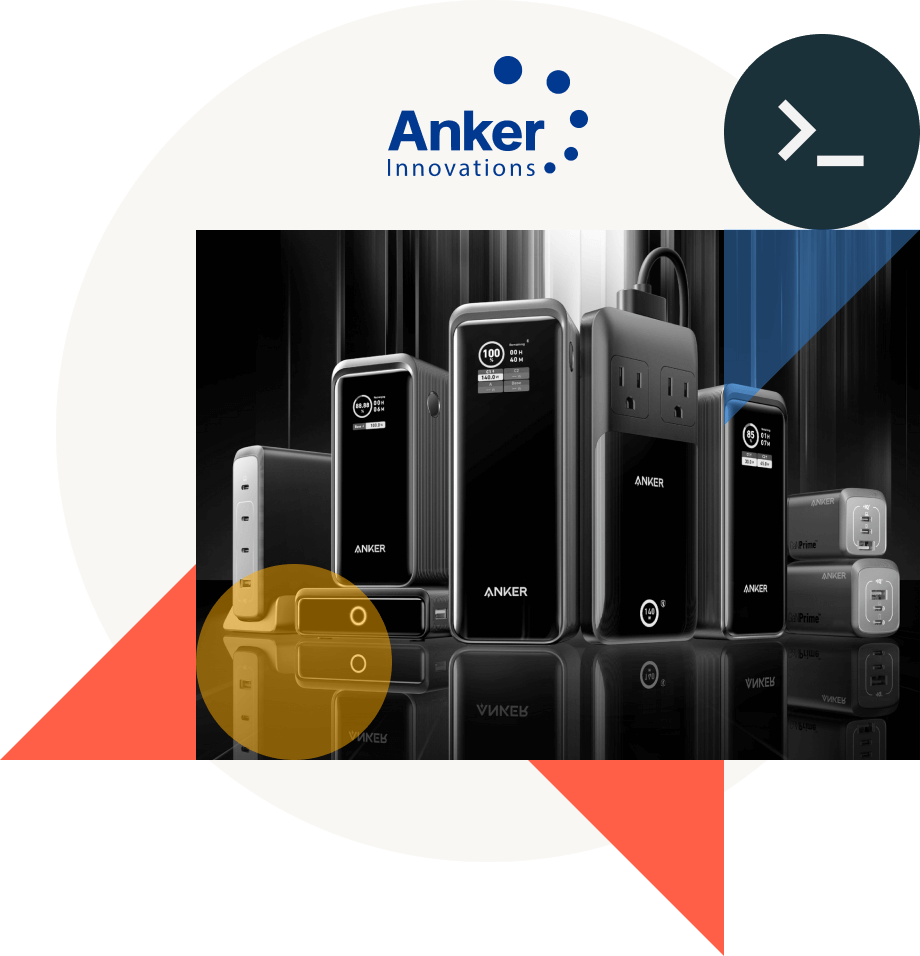Smarter product development powered by real-time insights
BI reports and dashboards
Employees using Databricks Data Intelligence Platform

As the rise in mobile devices continues to take hold globally, Anker is leading the charge in developing charger innovations — relying on local insights to inform expansion strategies to other markets. Tasked with bringing together distribution, product design, marketing and manufacturing from different regions to facilitate the production and deployment of these solutions, their data team was hampered by their legacy data warehouse, which required significant DevOps support to integrate relevant services and left little bandwidth for opportunities like granular forecasting or generative AI to accelerate product fit insights. Additionally, chaotic data governance made it impossible for business users, analysts and data scientists to access the data they needed to make decisions. Anker opted to unify over 200 terabytes of data from business, product, marketing and sales sources on the Databricks Data Intelligence Platform. This strategic move has fostered collaboration across 500+ employees, helping them to more effectively connect customers with more environmentally friendly and intelligent products.
Legacy infrastructure creates data silos and high operational costs
Anker is pioneering power delivery technology to charge phones, tablets and laptops at unprecedented speeds, whether at home, in the car or on the go. Key to their ability to improve operations and margins is the use of data to optimize almost every aspect of the business — from automating manufacturing to using data insights to inform product road maps, marketing strategies and demand forecasting. However, with terabytes of data generated across the business, accessing and sharing the data was inconsistent at best and often impossible. Every single data consumer competed for resources on a single AWS compute cluster. If a job failed, it would affect other jobs from other teams, leading to task accumulation and stunted productivity. Their lean data team constantly dealt with managing the infrastructure of different AWS microservices, leaving little time to focus on higher-value data tasks to support the business.
“Data governance was a particular pain point for us since we couldn’t give table-level control to the data,” said Li Shu, Data Architect at Anker. “In order for different users to access data, they had to depend on the owner of the data, which provided little transparency about who was using the data and how.”
Anker needed to modernize their data infrastructure with a unified approach that could integrate data from multiple systems and applications, including structured and unstructured data generated by different business units and devices, and prepare the data for the business to securely mine insights and the data science team to develop ML models that embed new innovations into their operations. At the same time, the platform needed to solve data security and compliance issues as well as decrease costs to run at scale since global operations meant employees would be continually querying the platform.
Solving the data sharing vs. data governance conflict with lakehouse architecture
Anker’s first instinct was to build their infrastructure through native AWS services, but they soon reached a breaking point as the DevOps resources required to interconnect disjointed services were too high. “Our data engineering and science teams used different tooling to do their work,” explained Shu. “This added unnecessary complexity to our workflows.” The impact trickled down to business teams that wanted to be data driven as they weren’t getting the level of support they needed from engineering.
As they evaluated cloud platforms, they quickly disqualified Snowflake since it didn’t meet their requirement of operational simplicity and unifying data, analytics and AI under the same platform. With a focus on democratizing data across the entire company, Anker determined the Databricks Data Intelligence Platform was the best fit. “Once the platform proved itself, a few users began to use the Databricks Data Intelligence Platform to complete some data science work,” said Shu. “Those early users became evangelists for the platform, which then brought in additional users who saw the success of those early use cases. This had a snowball effect, enticing other groups to do their work on the lakehouse architecture as we began to solve more business scenarios.”
With Delta Lake providing a unified storage layer for various levels of data, users can collect, process, analyze and visualize large amounts of data. Once data is in the lakehouse, they use Delta Sharing to make data available to the data analytics and business teams and Unity Catalog for governance. Previously, they would give users accounts to their cloud data warehouse, which was complicated and did not provide data access auditability. “For us, Unity Catalog has been the most important feature as it helps govern data access at the table level, making sharing easy without compromising on governance,” said Shu.
By getting the basics right when it comes to data engineering, Anker’s team can now pursue bolder data science ideas. They’ve automated pipeline orchestration from training to deployment via MLflow, providing efficient application development and deployment capabilities to help Anker more efficiently launch applications and services that enhance customer satisfaction. With the flexibility of the lakehouse architecture, Anker is starting to integrate large language models (LLMs) for use cases like auto-generated SQL commands and code review. In the future, they hope to leverage generative AI to implement a knowledge repository that can answer questions from the business.
A unified data platform to report on goals — and influence them
Technological change is fast, and new technologies emerge in an endless stream. It is necessary to collect and analyze a large amount of information, but the channels and methods for obtaining information are not always easy. With the Databricks Data Intelligence Platform, Anker can easily ingest and visualize large amounts of data to uncover information, trends and patterns hidden behind the data. This has helped Anker better understand market demand and consumer behavior in order to develop better products and marketing strategies.
“The Databricks Data Intelligence Platform has made our data easy to access, secure and collaborate on,” said Shu. “With data and AI at our fingertips, we can push our goals of further globalization, deeper cultivation of the intelligent hardware industry and high-quality expansion of product categories.”

